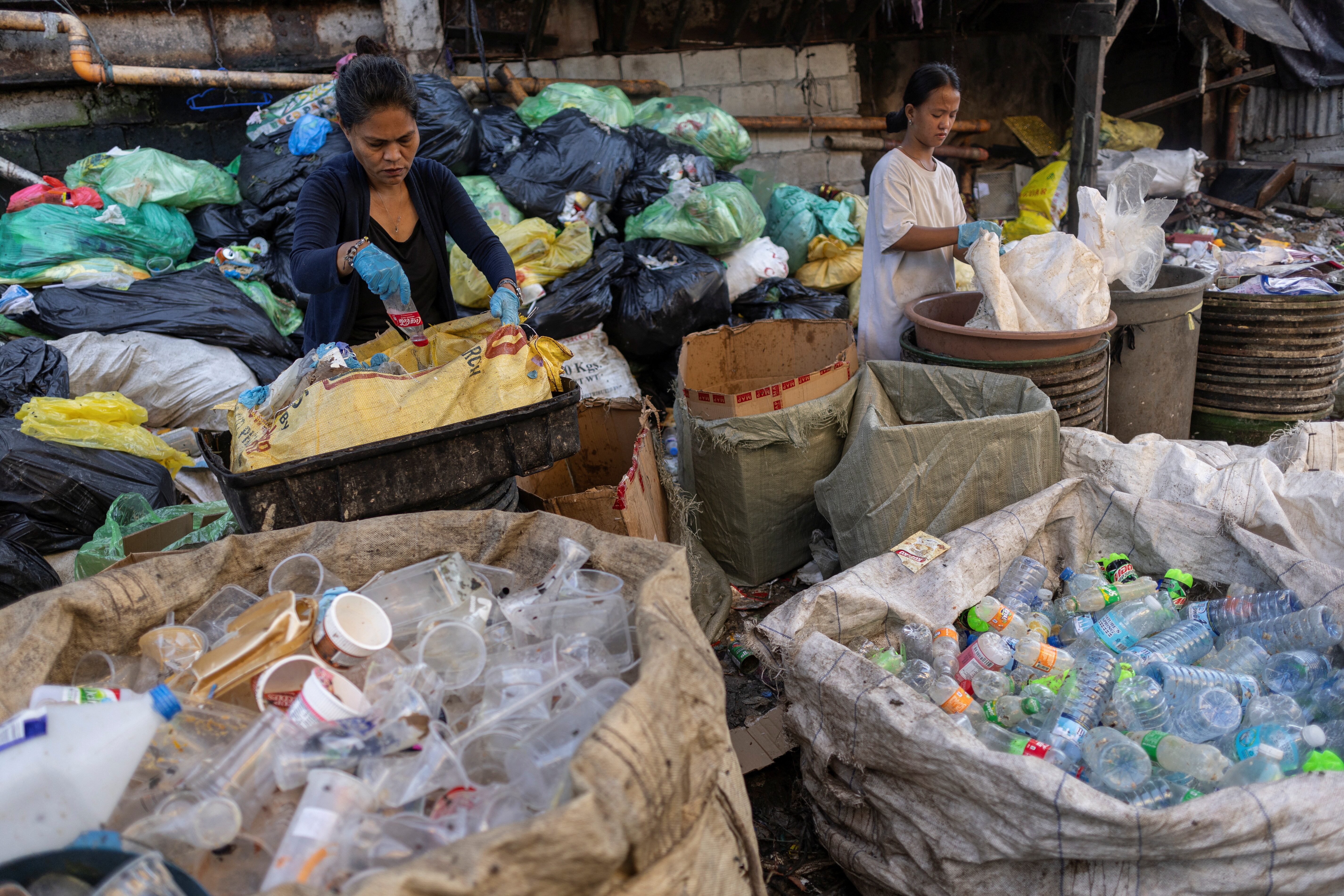Time to measure up: 5 ways the fashion industry can be made more sustainable

Demand for textiles is set to expand by 84% between 2010 and 2030 Image: REUTERS
Clothing is a reflection of our cultural and personal identity. It has helped historians track societal progress, and anthropologists understand cultural and social norms.
For women in the West, the evolution of wardrobes over the past 100 years has gone hand in hand with a shift in social equality; feminists in the late 1960s burned their bras as a symbol of the repression they experienced in society. Cultures around the world express tradition and identity through dress, from beautifully crafted hand-woven kiras in Bhutan to the dashiki in west Africa.
But if we see clothing as a core expression of our identity, we must seriously reflect on the fact that today, its production can seriously damage the people and cultures it seeks to represent.
The trends are staggering. Global demand for natural and man-made textile fibres is set to expand by 84% between 2010 and 2030; according to the Ellen MacArthur Foundation, textiles production is responsible for 1.2 billion tonnes of greenhouse gas emissions annually, more than all international flights and maritime shipping combined.
Hazardous substances used in textile production have serious impacts on the health of textile workers, and toxic effluents cause major environmental damage. From an economic perspective, more than $500 billion of value is lost every year due to clothing under-utilisation and the lack of recycling.

Last week, the industry converged at the Copenhagen Fashion Summit – with leaders, innovators and designers seeking a more sustainable future. Of all industries, the fashion business is driven by creativity and ingenuity, which if harnessed for good can yield substantial progress. Here are a few sparks of innovation that could help us move in the right direction:
A growing number of innovators have changed how they see what consumers are really after – access to fashion, not necessarily ownership of clothes. An emerging wave of companies are offering clothing as a service – from YCloset, Mud Jeans, Rent the Runway, HurrCollective and, for children, Vigga. Such business models have the potential to drive up the quality of products to ensure longevity, make shopping easy while providing a channel for take-back, reuse or recycling. These models won’t be relevant for all market segments or satisfy all consumer preferences, but can certainly be part of the solution.
From lab-grown leather to sustainable cellulose-based materials, impressive innovations are challenging traditional assumptions about how high-performance materials are produced. For example, Lenzing has developed a sustainable cellulose-based textile, Tencel, that promises quality, performance and sustainability. Social entrepreneur Modern Meadow is taking fashion into the laboratory, creating “biofabricated” materials, with the first bio-engineered leather launched last year. This is only the very tip of the iceberg in what innovations can be explored to reimagine materials production.
Today, less than 1% of material used to produce clothing is recycled into new clothing, and only 13% of the total material input is in some way recycled after clothing use. While many consumers think they are doing good by donating clothes, the sheer volume of donations means much ends up in landfills. Economic incentives to encourage clothing recycling are weak, and technological innovation is lacking. A few digital platforms for clothing take-back are emerging to incentivize consumers, such as Yellow Octopus, but a strong government push will be required to rebalance what is currently a broken market system for recovery and recycling. Policy options including extended producer responsibility and outright regulation to, for example, ban the burning of unsold fashion items have begun to take shape in countries like France and the UK.
As architect and designer William McDonough has said many times, a circular economy only provides a positive contribution if we are circulating goods, not “bads”. Ensuring that materials are produced in a way that avoids the use and therefore recirculation of toxic chemicals and by-products is essential. ZDHC, a multistakeholder organisation working for the zero discharge of hazardous chemicals in the textiles industry, is leading the way with a focus on advancing the removal of hazardous chemicals from supply chains with far-reaching impacts globally.
Young people are playing a critical role in calling for a more sustainable fashion sector – with more than 30 World Economic Forum Global Shaper hubs leading a Shaping Fashion initiative through ground-up collective action. While the burden of impact should not fall to consumers to solve, their engagement in both calling for a more sustainable future, while also participating in a circular economy for fashion is critical to shift the system.
While a few shining stars are taking committed action, they cannot shift an entire fashion system, with its vastly distributed supply chains and extremely competitive nature. Global public and private sector leadership backed by actions at scale will be critical. Recent positive signals are emerging: the convening body Global Fashion Agenda is promoting a 2020 circularity commitment that over 10% of the industry have endorsed, France is leveraging its G7 leadership to spearhead a policy push and has called on François-Henri Pinault, CEO of Kering, to bring business along. The European Commission has also highlighted textiles as the next priority for regulatory focus, and more countries are exploring national policy and regulatory actions.
If such efforts can build on the incredible work already advanced by organizations like the Sustainable Apparel Coalition and others, gain rapid momentum and include CEO-level leadership from along the entire production chain, a more safe and circular fashion industry may be on the horizon.
Don't miss any update on this topic
Create a free account and access your personalized content collection with our latest publications and analyses.
License and Republishing
World Economic Forum articles may be republished in accordance with the Creative Commons Attribution-NonCommercial-NoDerivatives 4.0 International Public License, and in accordance with our Terms of Use.
The views expressed in this article are those of the author alone and not the World Economic Forum.
Stay up to date:
Future of Consumption
Related topics:
Forum Stories newsletter
Bringing you weekly curated insights and analysis on the global issues that matter.
More on Circular EconomySee all
Felipe Basso
November 13, 2025







